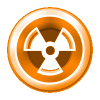Digitalnumber: Difference between revisions
No edit summary |
No edit summary |
||
| Line 1: | Line 1: | ||
digitalnumber <tilenum> <x> <y> <number> <shade> <pal> <orientation> <x1> <y1> <x2> <y2> | digitalnumber <tilenum> <x> <y> <number> <shade> <pal> <[[orientation]]> <x1> <y1> <x2> <y2> | ||
Prints a number to the screen using a function similar to that which prints the health and ammo counters in the HUD. | Prints a number to the screen using a function similar to that which prints the health and ammo counters in the HUD. | ||
| Line 11: | Line 11: | ||
<shade> and <pal> are obviously shade and palette. | <shade> and <pal> are obviously shade and palette. | ||
<orientation> is | <[[orientation]]> Controls the way the sprite is drawn (see entry) | ||
<x1>, <y1>, <x2> and <y2> are boundaries on the screen that define where the number may be drawn. | <x1>, <y1>, <x2> and <y2> are boundaries on the screen that define where the number may be drawn. | ||
Revision as of 09:04, 26 July 2006
digitalnumber <tilenum> <x> <y> <number> <shade> <pal> <orientation> <x1> <y1> <x2> <y2>
Prints a number to the screen using a function similar to that which prints the health and ammo counters in the HUD.
<tilenum> is the first tile of a sequence of numbers ordered from 0-9. See tile 2472 for an example.
<x> and <y> are on-screen coordinates.
<number> is the gamevar to print the value from.
<shade> and <pal> are obviously shade and palette.
<orientation> Controls the way the sprite is drawn (see entry)
<x1>, <y1>, <x2> and <y2> are boundaries on the screen that define where the number may be drawn.
Example code:
setvar x 300 setvar y 10 setvar shade 0 setvar pal 0 setvar tilenum DIGITALNUM setvar orientation 26 getactor[THISACTOR].extra TEMP digitalnumber tilenum x y TEMP shade pal orientation ZERO ZERO xdim ydim
Please note that as with gametext, minitext and friends, digitalnumber only works during events.
